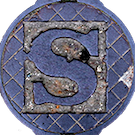23
edits
 Synthesis Infrastructures
Synthesis Infrastructures
No edit summary |
No edit summary |
||
| (5 intermediate revisions by 4 users not shown) | |||
| Line 100: | Line 100: | ||
- Aligning communities of practice with a wider goal? | - Aligning communities of practice with a wider goal? | ||
- Innovation in seeing interdisciplinarity "downstack" (ie not in the front-line science/research, but in the tools that groups use). See that collaboration as also interdisciplinary. | |||
| Line 133: | Line 136: | ||
1.) STRUCTURE & USE | 1.) STRUCTURE & USE | ||
IPCC -> claims | IPCC -> claims in obsidian | ||
beyond info | beyond info architecture | ||
holy scripture | holy scripture available for the masses | ||
find new connections | find new connections | ||
index | index | ||
| Line 186: | Line 189: | ||
What is it for open science? | What is it for open science? | ||
Mark up our grant proposals, future reuse | Mark up our grant proposals, future reuse | ||
Semantic bibliography | Semantic bibliography | ||
This was the first half of that project - https://abstract-poetry.fly.dev/bibliography it related various references to each other so you could see the global narrative. We never built out the ability to annotate each of the papers and how the related to the paper, or to add papers necessarily. (We have a more exploratory /searchy version of this at abstract-poetry.fly.dev/search which can more document a search process. | |||
Tremendous value vision, sustainable overhead? | Tremendous value vision, sustainable overhead? | ||
Finding the right structure | Finding the right structure | ||
Matthew's answers to our draft questions: | |||
- Research Data Alliance (RDA), Materials Research Data Alliance (MaRDA), workshops | |||
-Taking interdisciplinary in a very narrow sense, an example to bridge gaps between existing materials databases is OPTIMADE. We spent 5 years devising a common API format between 15 or so existing crystal structure databases, primarily of competitors, and with varying uptake. Should now be possible for anyone, to create a database and join the federation, e.g., a new project just tripeld the number of structures available. Each database has different slants even if the quanta of data shared is common. Unclear if this is socially sustainable. Hinged on developing a lightweight federation with "shoddy" infrastructure on top of a relatively API format. | |||
- Specific example: as this data is machine-actionable, new software projects can now query all known materials, potentially significantly accelerating materials discovery. New databases can trivially join the federation, and previously "dead" data can be brought back to life by adding an API on top of it. Automated labs can exchange information. | |||
edits